Tour type: Birding Tour | Regions: Adjara, Samtskhe-Javakheti, Imereti
Autumn Bird Migration in Western Georgia
Dates: September – October 2025 - 2026 | Duration: 8 days | Group size: 4 – 8
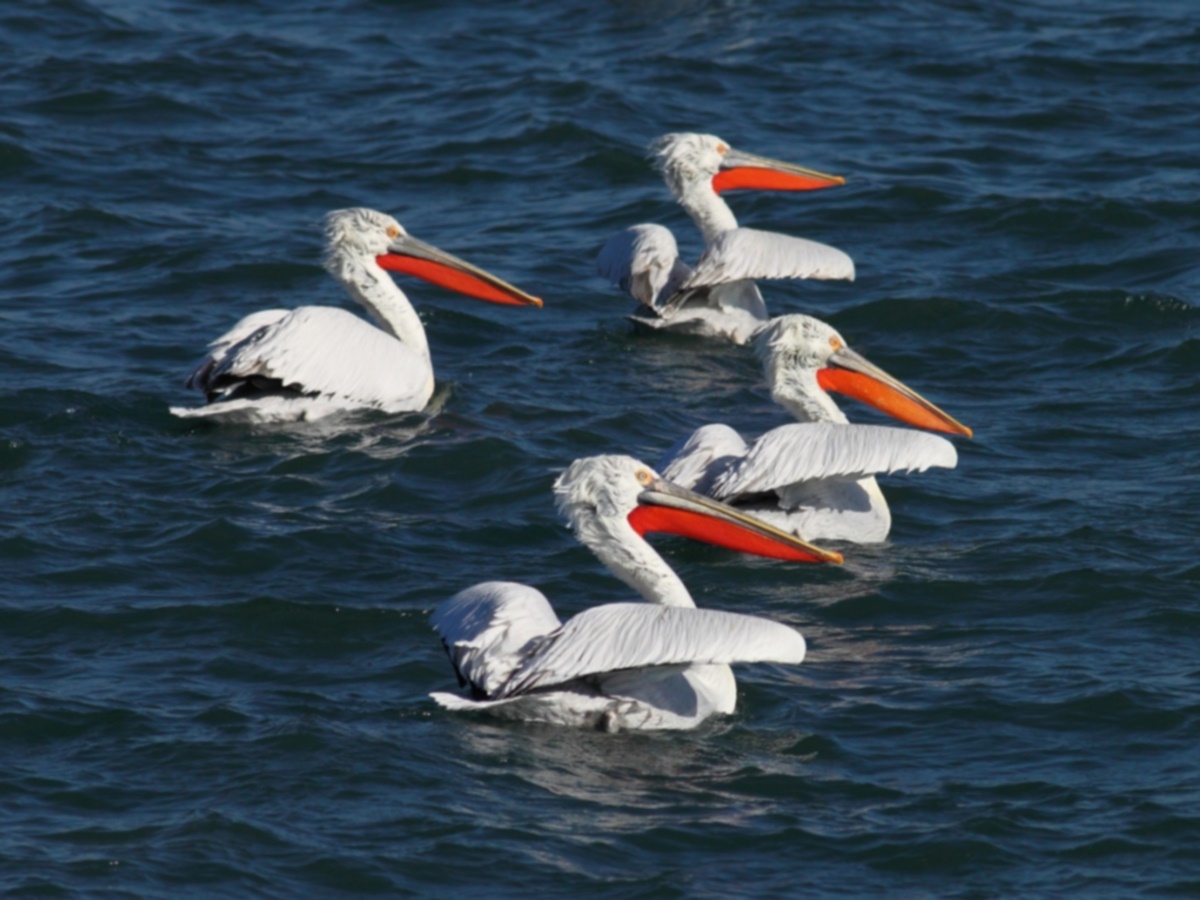
Intro
Georgia is one of the most important sites for migratory birds of prey. Millions of raptors pass the country every year due to the topography of the region. The specific relief of the Southern Caucasus Mountains creates several bottlenecks, where the birds are forced to pass. Due its high variety of climates, landscapes, and ecosystems the country hosts more than 400 different bird species
The tour takes you to spectacular bird watching sites from the Black Sea coastal lowlands with wetland meadows and rainforests, through coniferous forests and subalpine meadows to lakes of volcanic highland and steppes.
Furthermore, you discover iconic monuments and immerse yourself in Georgian lifestyle.
Highlights
- Watching migrant birds from the world known birding resorts of bottleneck of Batumi.
- Studying unique bird species of Georgia
- Exploring the ancient cave city Vardzia and the Soviet-built observatory in Abastumani
- Enjoying the diversity of Georgian landscapes, monuments, food, wine and folklore
Tour Guide
Zurab Javakhishvili, lecturer and associate professor at the School of Natural Science and Medicine, Ilia State University, Tbilisi
Language
English
Equipment
Walking or hiking boots, insect repellent and sunscreen, binoculars, water bottles and lunch boxes for multiple use, rain slicker
Birdwatcher's Code of Conduct
GTG practices and promotes a respectful, enjoyable, and thoughtful birding as defined in the code of conduct of bird associations
Tour Map
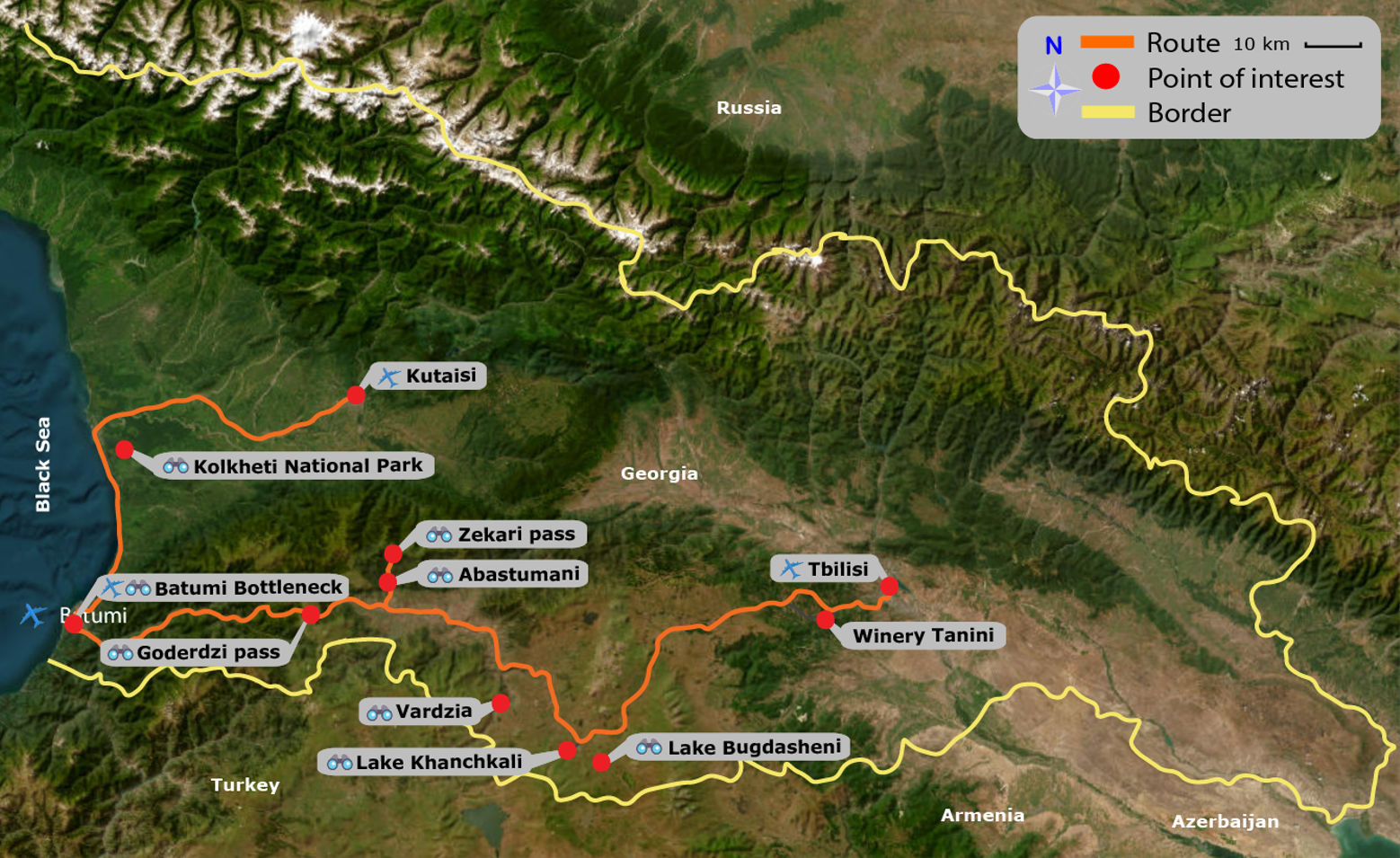
Itinerary

Day 1 Arrival
Arrival at International Airport Kutaisi.
Transfer to your hotel regardless of your arrival time.
In the evening city walking tour.
Overstay night in Kutaisi

Day 2 Kutaisi – Kolkheti National Park – Batumi
After the breakfast, departure to the Kolkheti National Park, inscribed on the World Heritage List since July 2021. The lowland area is covered by dark forests, bushes, lakes, deltas, rivers, cracks, marshes, swamp and dry meadows. The high- diversity ecosystem hosts more than 250 different bird species.
We float on the Paliastomi Lake with a pontoon boat and observe Great White Pelicans, White-Headed Ducks, Eurasian Wigeons, Great Crested Grebes, Yelkouan Shearwaters, Squacco Herons, Eurasian Spoonbills, Glossy Ibis and more.
We continue to the gorges of the Pichori river, called the Georgian Amazon. The riverbanks are fully covered by relict forests that resemble a jungle landscape. Here we can observe Western Ospreys, White-Tailed Eagles, Hooded Crows, Western Cattle Egrets, Tufted Ducks, Kingfishers, or White-Winged Terns.
Late afternoon we reach the seaside of the Paliastomi Lake where the Maltakva river drains into the Black Sea. We walk on a grey sandy beach with magnetic particles. The area is known as a balneological resort, but it is also an excellent site to watch shorebirds, like Kentish Plovers, Pied Avocets, Hyperborean Phalaropes, Sandpipers, Lesser and Greater Sand Plovers.
In the late afternoon we drive to Batumi.
Meal plan: breakfast and picnic
Overstay night in Batumi

Day 3 Batumi Bottleneck (Chaisubani, Chorokhi Delta)
Today we explore the bottleneck of Batumi, the raptor counting hotspot in Georgia. The site is one of the most important birdwatching sites in Eastern Europe. Migratory birds stop here on their way to Africa or Southern Asia.
Early in the morning drive to the village of Chaisubani, then short walk to the watchpoint Shuamta. From here you can observe thousands of migrating raptors: European Honey-Buzzards, Montagu's Harriers, Western Marsh Harriers, Levant Sparrowhawks, Eurasian Hobbies, Red-Footed Falcons, Merlins, Ospreys, Snake Eagles, Greater Spotted Eagles, White-Tailed Eagles, Goshawks, Peregrine Falcons and others.
In the afternoon, drive to the Chorokhi delta, near the Turkish border. We visit the beautiful gorge where the Chorokhi river flows into the Black Sea and forms a delta. The dry meadows trout marches and ponds to the seashore are perfect for the migratory species of waterfowl and for passerine. The most common birds are River, Paddy-Field, Moustached, Marsh and Red Warblers, Lesser and Greater Short-Toed Larks, Tawny, Tree, Richards- and Red-Throated Pipits, Siberian Stonechats, and different species of Yellow Wagtails, and Wheatears. Sometimes we can see Caspian Terns, Temminck's Stints and Curlew Sandpipers.
Meal plan: breakfast and picnic
Overnight stay in Batumi

Day 4 Batumi - Goderdzi Pass - Abastumani
After breakfast drive over the Goderdzi Pass to Abastumani. You discover the unique Adjarian hinterland. We visit the village of Kviakhidzeebi, where you can experience rural life. The peasants produce pumpkins, beans, cucumbers, corn, nuts and fruits. We taste traditional food and the rare jara honey. It is 100% pure and wild. Western Georgia is one of the few countries in the world that has preserved wild beekeeping. The honey is not produced in hives, but in hollowed wooden logs called jara, placed in the wilderness on the top of high trees or on high cliffs to protect it from brown bears. A beekeeper guides us in the forest and show us his jaras.
We continue to Abastumani. On the way, we make some stops to enjoy the breath-taking panoramic views of the Lesser Caucasus. We can see mountain birds like Nnorthern Ravens, Alpine Accentors, Alpine Choughs, and Red Crossbills.
Meal Plan: breakfast and picnic
Overnight stay in Abastumani
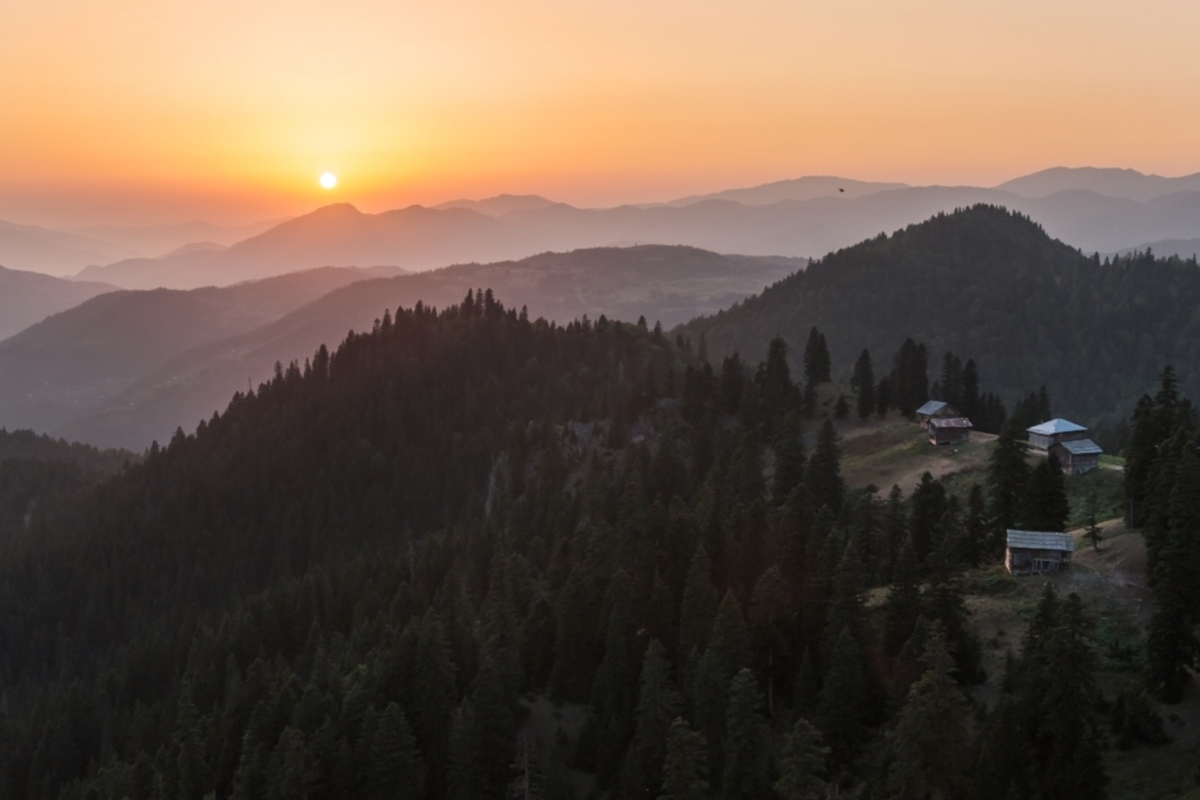
Day 5 Abastumani - Zekari Pass - Abastumani
Departure to the Zekari Pass (2,182m). Mixed coniferous and deciduous forests as well as subalpine and alpine meadows host a lot of unique bird species. You can observe the Caspian Snowcocks, Caucasian Black Grouses, Krüper's Nuthatches, boreal birds, Long-Eared-, Scop-, Tawny- and Eagle Owls, Greater-, Lesser– and Middle Spotted, White-Backed, Green and Black Woodpeckers, Goshawks, Peregrine Falcons, Common Crossbills, Wood Pigeons, Stock Doves, White-Throated Dippers, Wrens, Goldcrests, and Warblers. In subalpine and alpine areas, you can also see Golden Eagles.
Our next stop is the Abastumani Observatory built in the Soviet era on Mount Kanobili (1770m). The manually controlled 12-meter-long telescope allows you to reveal Saturn’s beautiful rings, Pluton and other planets and stars.
Meal plan: breakfast and picnic
Overnight stay in Abastumani
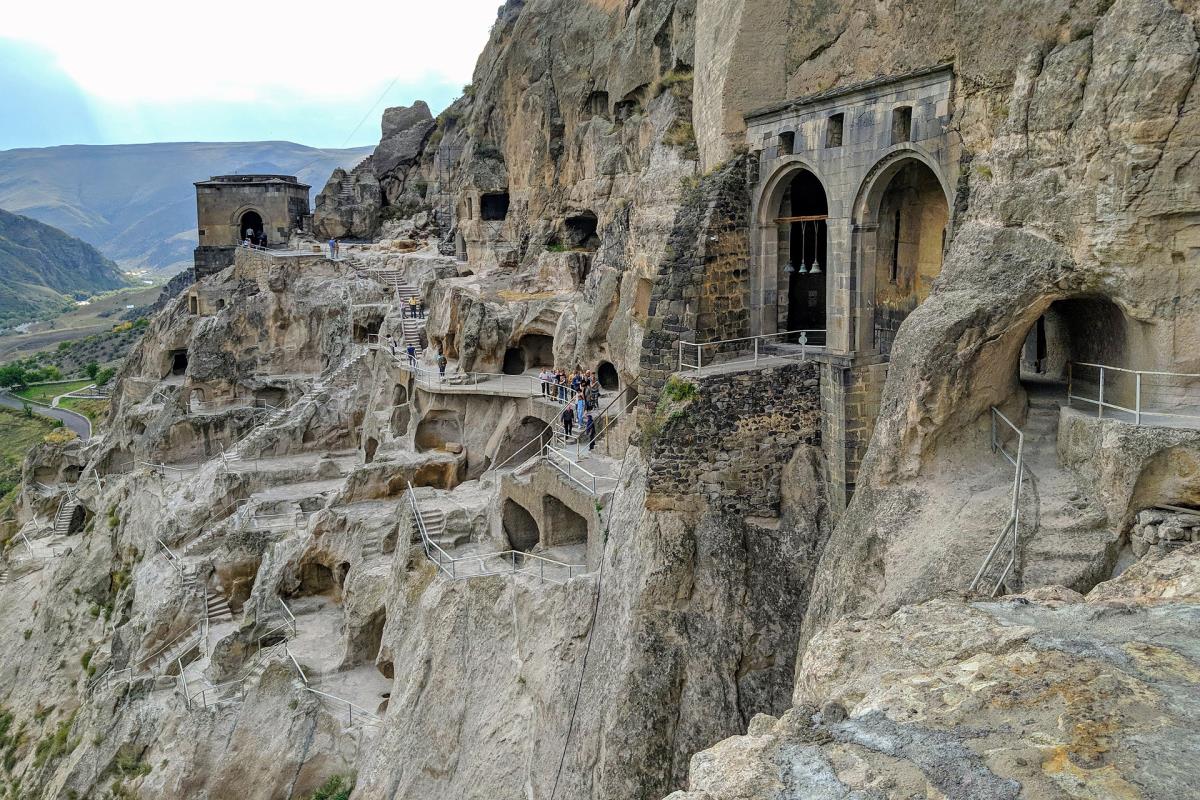
Day 6 Abastumani – Vardzia – Aspindza
After breakfast departure towards the settlement Aspindza located on the east side of the Lesser Caucasus. On the way we make several stops to observe local birds. The area is characterised by a semi-arid climate, rocky hills covered by lithophytes and xerophytes, dry volcanic cliffs, varied woodland edge, shrubby areas, and narrow humid forests along the Rioni Valley. This unique ecosystem hosts a completely different flora and fauna than in Western Georgia. It can be that we witness spectacular hunting scenes of Golden Eagles, Eurasian Griffons, Lammergeyers, or Eurasian Eagle-Owls.
In the afternoon, we visit the ancient cave city Vardzia, hewn into the horizontal layers of volcanic ashes and andesitic lava flows. The site is submitted for inscription on the UNESCO World Heritage List. We stroll in the gauges of the cave city and learn more about its vibrant history. Furthermore, we observe birds, like in rocks breeding Buntings, Rock Sparrows, Western Rock Nuthatches, Melodious Blue Rock Thrushes, Red-Fronted Serins, Black Redstarts, Common Red Stars, and Mountain Chiffchaffs.
Meal plan: breakfast and picnic
Overnight stay in Aspindza

Day 7 Aspindza – Javajheti Protected Areas – Tbilisi
After breakfast, drive along the Armenian and Turkish borders in the Javakheti volcanic highland. It is a one of the impressive mountain steppe areas in the Southern Caucasus. You experience beautiful lakes, small villages, and houses covered with mud and cow dung to protect against heat in summer and cold in winter. The natural environment is ideal for breeding populations. We can observe Velvet Scoters, Ruddy Shelducks, Ferruginous Ducks, and many other duck species.
Visit to the large Khanchali Lake and the tiny Bugdasheni Lake, mirroring the Mount Abul. From the boat we can see Corncrakes, Marshes and Montague's Harriers, White and Dalmatian Pelicans, Red- and Black-Necked Grebes, White Storks, Common Cranes, Squacco Herons, Great White Egrets, Eurasian Spoonbills, Glossy Ibis, Marsh and Terek Sandpipers, more species of Waders, Gulls, and Terns like Great Black-Headed Gulls, Gull-Billed Terns, and White-Winged Black Terns.
In the evening we stop at a winery in the village of Kiketi. While visiting the wine cellar and the vineyards you learn more about the traditional qvevri winemaking and the diversity of Georgian wines.
The day ends with a supra, a typical Georgian banquet moderated by an experienced toastmaster and accompanied by polyphonic chants.
Meal plan: breakfast, picnic, and dinner
Overnight stay in Tbilisi

Day 8 Departure
After the breakfast, check-out and transfer to International Airport Tbilisi depending on your departure time.
Meal plan: breakfast
Gallery
Dates, Availability & Prices
| Dates* | Availability | Prices from** | Your selection |
|---|
* Group departure dates are guaranteed only if the minimum of 4 travellers per group is reached. To join a group, please inform our offices of the dates of the tour you are interested in
** Based on double occupancy
What's Included
- Airport transfers
- Transport in comfortable vehicles (4×4 car or minibus)
- Pantoon boat trip
- Accommodation (7 nights) in birder friendly *** hotels
- Meals: 7x breakfast, 6x picnic/lunch, 1x welfare dinner
- Accompaniment by an English-speaking ornithologist
- Entrance fees to sites & parks
What's not Included
- International airfare
- Travel insurance
More Option
Related Tours
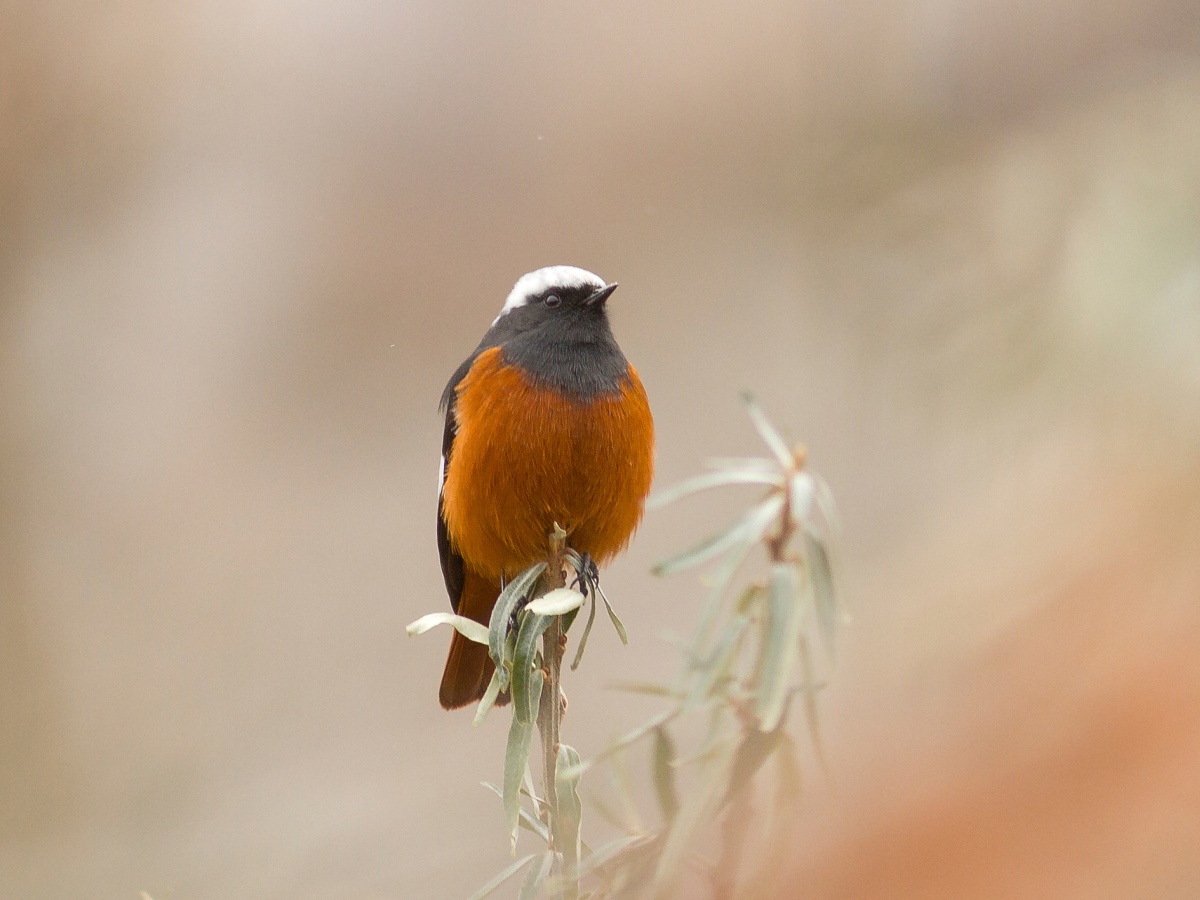
Breeders and Migrants in Eastern Georgia. From Glaciers to Semi-Deserts
Apr-May | 8 days | From 1285.00 $
Find out more| Legal notices | | Privacy policy | | Terms and Conditions | | Contact |
© Geographic Travel Georgia 2025 | Website By Nodar Bedinadze






.jpg)
.jpg)
.jpg)
.jpg)
.jpg)
.jpg)
.jpg)
.jpg)
.jpg)
).jpg)
.jpg)
.jpg)
.jpg)
.jpg)
.jpg)
.jpg)
.jpg)
.jpg)
.jpg)
.jpg)
.jpg)